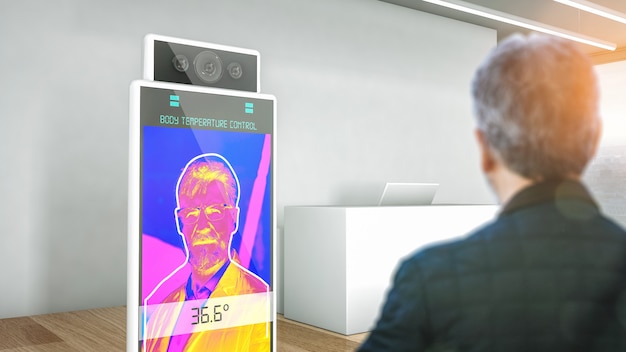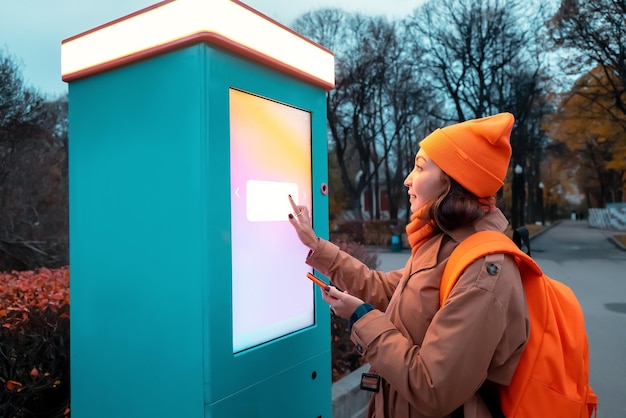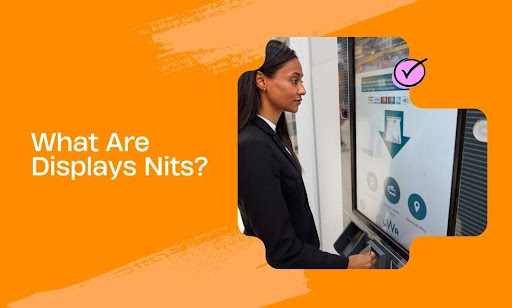Ever looked at a screen outside and thought, “Why is this so hard to see?” It’s not your eyes. It’s nits. A screen’s brightness isn’t measured in watts or lumens—it’s measured in nits. The higher the nits, the brighter the display. But how many do you actually need for outdoor use? 1,000? 2,500? More?
The answer depends on sunlight, viewing angles, and screen technology. A display that looks crystal clear indoors might turn into a washed-out, unreadable mess outdoors. That’s why getting the right nit level is non-negotiable for food truck menu boards, outdoor advertising, and digital signage in bright environments.
What You’ll Learn in This Article:
- What a nit is and why it matters for displays
- How nit levels impact outdoor visibility
- The ideal nit count for screens in direct sunlight vs. shade
- How manufacturers measure nits and why some numbers are misleading
- How CrownTV’s waterproof digital signage makes outdoor displays effortless
Let’s break it down.
How Screen Brightness Works and Why Nits Matter

Brightness isn’t a guessing game. If a screen looks crisp and clear indoors but fades outdoors, nits are the reason. A nit is a unit of measurement that tells you how much light a screen emits per square meter. The higher the nit count, the brighter the display.
For reference:
- A standard office monitor averages 200–300 nits
- A smartphone screen typically reaches 600–1,000 nits
- A high-brightness outdoor display can exceed 2,500 nits
Why does this matter? Because ambient light fights screen visibility. The more sunlight or glare a display faces, the higher its brightness needs to be to stay readable.
How Bright Is Bright Enough?
Brightness needs to scale with the environment:
- Indoor screens (like office monitors or TVs) don’t need more than 300–500 nits
- Shaded outdoor areas require at least 1,000 nits
- Direct sunlight? Nothing under 2,500 nits will cut it
If a screen doesn’t reach the right nit level, images get washed out, colors lose contrast, and text becomes unreadable.
Case Study: A study on outdoor advertising screens found that displays with fewer than 2,000 nits lost 60% of visibility in direct sunlight. That’s why knowing the right brightness level for each setting isn’t optional—it’s a must.
The Direct Impact of Nit Levels on Outdoor Visibility
A display’s nit level doesn’t just affect brightness—it determines whether the screen can remain usable in outdoor environments. When nit levels are too low, external light overpowers the screen’s luminance, leading to poor contrast, muted colors, and illegible text.
How Light Interference Reduces Visibility
Outdoor displays compete against two major light sources:
- Direct sunlight – the most aggressive form of interference, which can exceed 100,000 lux in intensity
- Ambient glare – reflections from surrounding surfaces, including glass windows, pavement, and nearby objects
A display with insufficient nits can’t counteract these external light sources, causing:
- Washed-out images – The screen’s colors lose vibrancy as external light drowns out the display’s emission.
- Low contrast – The differentiation between text and background weakens, making information difficult to read.
- Reduced energy efficiency – Without proper brightness calibration, backlight compensation forces the display to work harder, increasing power consumption.
The Science Behind High-Nit Displays
High-nit screens are engineered to maintain image integrity in bright environments through:
- Stronger backlighting systems – LED backlights with higher luminance output improve brightness without overloading the display.
- Anti-reflective coatings – These coatings reduce glare by diffusing external light rather than reflecting it.
- Adaptive brightness sensors – Some commercial-grade displays adjust nit levels based on ambient conditions, ensuring consistent readability.
A test found that 1,000-nit screens lost 47% of their perceived brightness in direct sunlight, while 3,000-nit displays maintained over 85% visibility. Without adequate nit levels, outdoor displays become ineffective, failing to deliver clear content in high-glare conditions.
Choosing the Right Nit Count for Different Outdoor Conditions

Outdoor displays operate under constantly changing light conditions. A single-nit recommendation doesn’t apply universally, as visibility requirements shift based on direct sunlight, shade, overcast weather, and reflective surroundings. The right brightness level depends on the specific environmental challenges the display will face.
Direct Sunlight Demands Higher Nit Levels
Displays operating in full sunlight exposure face the most extreme brightness demands. Direct sunlight produces 100,000+ lux, overwhelming low-nit screens and making them completely unreadable. The key issue is that the luminance output of the display must exceed the surrounding light intensity to maintain contrast and visibility.
Recommended Nit Range: 2,500 to 4,000+ nits
Technical Challenges of Direct Sunlight:
- High Ambient Light Interference – Sunlight directly competes with screen luminance, requiring a display to produce significantly more brightness to compensate.
- Heat Buildup and Thermal Management – Higher brightness levels increase power draw and heat output, which can degrade LCD panels and reduce lifespan if thermal dissipation isn’t handled properly.
- Polarization Issues – Some display types (like OLEDs) struggle in bright conditions due to light polarization effects that reduce visibility when viewed through polarized sunglasses.
- Color Washout – Low-nit screens appear desaturated in sunlight due to excessive glare, causing a severe reduction in color accuracy and contrast ratio.
For maximum performance, high-nit outdoor displays use specialized LED backlights, advanced contrast enhancement, and optical bonding technology to increase brightness without excessive power consumption.
Shade and Indirect Light Require Moderate Brightness
Displays placed in partial shade, under a canopy, or positioned where buildings and objects block direct sunlight have lower brightness demands. However, indirect glare from reflective surfaces—such as glass storefronts, vehicles, or nearby polished materials—can still impact readability.
Recommended Nit Range: 1,000 to 1,500 nits
Key Considerations:
- Indirect Glare Handling – Even in shaded environments, a matte or anti-glare coating is required to diffuse ambient light and improve text legibility.
- Adaptive Brightness Control – Displays in mixed-light environments benefit from ambient light sensors that automatically adjust the brightness to prevent over-illumination or unnecessary power consumption.
- Viewing Angle Sensitivity – High-brightness LCDs with IPS technology maintain color accuracy and visibility even when viewed from off-axis positions in partially shaded conditions.
Overcast and Cloudy Conditions Lower the Brightness Demand
Cloud cover significantly reduces direct solar intensity, bringing ambient light levels down to 10,000–20,000 lux. While displays don’t require the same extreme brightness levels needed for direct sunlight, they still must maintain high contrast and color consistency to ensure clear visibility.
Recommended Nit Range: 1,500 to 2,000 nits
Technical Factors to Address:
- Contrast Compensation – Without direct sunlight, the biggest issue is loss of contrast, making it essential to have displays with at least 3,000:1 static contrast ratios to maintain clarity in diffused lighting.
- Preventing Excessive Power Consumption – Lower nit requirements allow for energy-efficient LED backlighting, reducing unnecessary power usage in environments that don’t require maximum brightness output.
- Cloud Reflection Handling – While clouds diffuse light, they also create unpredictable gray-sky reflections, requiring low-reflectivity screen coatings to prevent hazy or washed-out display quality.
Snow-Covered Environments Intensify Reflective Glare
Snowy environments present unique challenges due to high light reflectance, with fresh snow reflecting up to 80% of sunlight. This significantly amplifies ambient brightness, making glare one of the primary concerns for outdoor screens.
Recommended Nit Range: 2,500 to 3,500 nits
Environmental Challenges:
- High Reflectivity Factor – Unlike standard overcast conditions, snow acts as a secondary light source, requiring higher nit levels than expected for a given ambient brightness.
- Cold Weather Performance – Extreme cold temperatures can reduce the responsiveness of LCD panels, requiring low-temperature operation components to maintain refresh rates and contrast ratios.
- Polarization and Viewing Angles – Snow glare can cause polarization issues, necessitating wide-angle viewing enhancements and glare-resistant optical films for better visibility from different perspectives.
Rainy or Foggy Conditions Can Reduce Visibility in Other Ways
Rain and fog present a different kind of visibility challenge. Instead of direct glare, light is scattered by moisture droplets in the air, reducing contrast and making screens appear dimmer than their actual brightness levels.
Recommended Nit Range: 1,500 to 2,500 nits
Technical Adjustments for High-Moisture Environments:
- Low-Contrast Visibility Compensation – Rain and fog conditions soften edges and reduce definition, making high-contrast ratio displays (5,000:1 or higher) critical for readability.
- Hydrophobic and Anti-Condensation Coatings – Water droplets on screen surfaces act as micro-lenses, distorting visibility. Hydrophobic coatings prevent moisture buildup, maintaining screen clarity.
- Ingress Protection (IP) Rating Requirements – Displays exposed to rain or fog must have at least an IP65 rating to prevent water damage and condensation-related screen failures.
The Right Balance Between Brightness and Efficiency
Outdoor flat panel displays need to be bright enough to combat environmental challenges, but they also must be efficient enough to avoid unnecessary power usage and prevent overheating or premature component degradation. Balancing peak brightness with energy efficiency ensures that screens remain visible in bright light without unnecessary strain on hardware components.
Key technologies that enhance visibility across different outdoor conditions include:
- Adaptive brightness control to dynamically adjust nits based on how many nits are needed in varying lighting conditions, ensuring screens remain legible without excessive power draw.
- Advanced anti-glare coatings to diffuse ambient light and reduce unwanted reflections, preserving contrast even in bright scenes.
- Optically bonded screens improve contrast and prevent internal reflection issues, optimizing the light emitted for better clarity.
- Wide temperature range LCD panels to ensure stable performance in extreme cold or heat, a necessity for LED displays operating in diverse outdoor climates.
Matching nit levels to specific environmental conditions ensures that digital signage and outdoor screens maintain maximum readability, longevity, and energy efficiency without sacrificing visibility.
Why CrownTV’s Outdoor Displays Deliver Unmatched Brightness in Any Environment
Outdoor digital signage demands high-performance displays built to withstand varying light conditions, extreme temperatures, and environmental challenges. CrownTV’s commercial-grade screens are designed for maximum visibility and durability, ensuring that content remains clear and readable in any setting—whether it’s direct sunlight in Arizona, heavy snowfall in Minnesota, or high humidity in Florida.
Engineered for High Visibility in Every Outdoor Condition
CrownTV’s high-brightness displays provide the ideal nit levels required for outdoor environments, ensuring that screens maintain sharp contrast, accurate colors, and clear text no matter where they are deployed.
- Up to 4,000 nits of brightness – Easily combats direct sunlight without losing color integrity or contrast.
- Adaptive brightness control – Adjusts brightness dynamically based on ambient light levels, preventing excessive power consumption while maintaining clarity.
- Anti-glare and anti-reflective coatings – Reduces interference from reflective surfaces, including glass, water, and metallic objects, to improve readability from all angles.
- Advanced LED backlighting technology – Enhances luminance efficiency while minimizing heat buildup, preventing overheating in hot climates.
Built to Withstand Harsh Weather and Temperature Extremes
Outdoor displays must do more than remain bright—they must function flawlessly in environments where temperature fluctuations, precipitation, and environmental contaminants threaten performance. CrownTV’s screens are engineered for resilience.
- IP65-rated waterproof protection – Shields internal components from rain, snow, and dust, preventing moisture-related failures.
- Wide operational temperature range – Designed to handle extreme heat in states like Texas and sub-zero conditions in colder regions without display degradation.
- UV-resistant screen materials – Prevents long-term sun exposure from causing discoloration or brightness deterioration over time.
Optimized for High-Traffic and Business-Critical Applications
CrownTV’s outdoor digital signage solutions are not limited to specific industries. These bright displays are used across retail, food service, transportation hubs, and entertainment venues, ensuring reliable operation for businesses in any state.
- Commercial-grade durability – Designed for continuous 24/7 operation, making them ideal for outdoor advertising, wayfinding, and menu boards.
- Plug-and-play installation – Allows businesses to deploy screens with minimal technical setup, streamlining installation for single-location businesses and nationwide chains alike.
- Remote management capabilities – Enables businesses to control and update content across multiple locations through a centralized platform, eliminating the need for on-site adjustments.
CrownTV’s high-brightness outdoor displays are engineered for maximum performance in any climate. Whether placed in the direct sun of California, the high winds of Chicago, or the storm-prone conditions of the Southeast, these displays provide reliable visibility, superior brightness, and long-term durability for any outdoor application.
Conclusion: Get the Right Brightness for Any Outdoor Display with CrownTV
Screen brightness isn’t just a number—it determines whether your digital signage is visible, readable, and effective in outdoor environments. Understanding nits, ambient light interference, and the right brightness levels for different conditions is the key to ensuring that your display doesn’t lose impact under harsh sunlight or unpredictable weather.
Key Takeaways from This Article:
- Nits measure display brightness and directly impact visibility in outdoor settings.
- Lower-nit screens struggle with sunlight glare, leading to washed-out images and poor readability.
- Direct sunlight requires at least 2,500 nits, while shaded and overcast conditions need 1,000–2,000 nits for clear visibility.
- Environmental factors like snow, rain, and reflective surfaces influence brightness requirements beyond direct light exposure.
- CrownTV’s high-brightness outdoor displays are engineered to handle extreme weather, fluctuating light conditions, and long-term durability challenges.
The right display isn’t just about brightness—it’s about reliability in any condition. CrownTV’s weatherproof, high-nit screens give businesses a clear, vibrant, and durable solution for any outdoor setting. Whether you’re dealing with scorching sun, heavy rain, or fluctuating temperatures, CrownTV ensures your message stays visible when it matters most.
What You Can Expect from CrownTV’s High-Brightness Digital Signage
- Full-service display solutions for any outdoor setting – From selecting the right high-nit screens to handling installation, CrownTV ensures your digital signage is bright enough to stay readable in direct sunlight, shade, or extreme weather conditions.
- Cloud-based management for easy control – Adjust and update your digital displays remotely from any device, ensuring consistent content visibility and real-time updates across all locations.
- Strategic planning for maximum impact – Our team assesses lighting conditions, ambient interference, and ideal nit levels to create a signage strategy that enhances visibility and engagement in outdoor environments.
- Seamless installation anywhere in the U.S. – With certified technicians in all 50 states, CrownTV provides professional installation, including cabling, system setup, and performance testing, ensuring your display is optimized for outdoor brightness requirements.
- Reliable hardware built for durability – Our commercial-grade digital signage media player ensures smooth, uninterrupted operation, even in harsh outdoor conditions where temperature fluctuations and exposure could affect performance.
- A vast selection of apps and integrations – Customize your high-brightness digital signage with apps that enhance functionality, from live weather updates to dynamic menu displays.
- Ongoing support to keep your screens running – Whether it’s software updates or troubleshooting visibility-related issues, CrownTV’s expert team is available to ensure your outdoor signage performs at its best.
- 13+ years of expertise in digital signage – With over a decade in the industry, CrownTV understands what it takes to create bright, high-contrast outdoor displays that maintain clarity, color accuracy, and impact in any environment.
CrownTV delivers more than just high-brightness displays—we provide an end-to-end solution designed for maximum visibility, long-term reliability, and seamless integration into your business operations.

